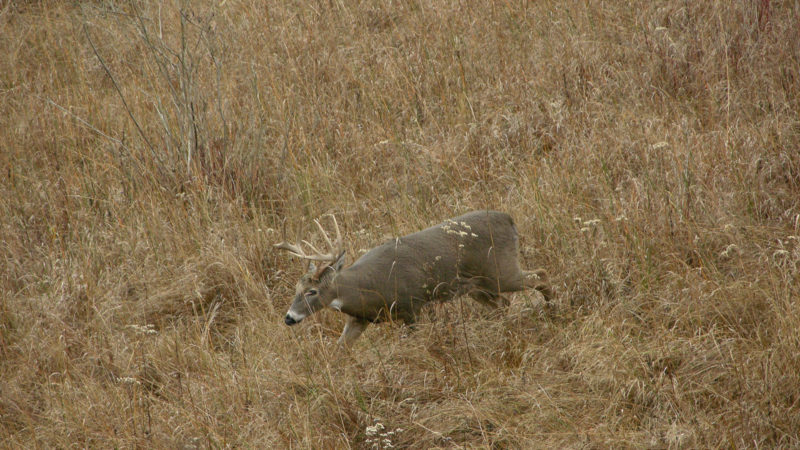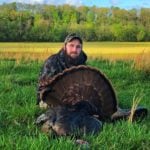Every year, hunters from across the nation eagerly await the rut, and the wealth of excitement brought about by hunting during this period of season. As a result, hunters spend a significant amount of time during October and November, attempting to decipher when the rut is beginning, peaking, and coming to a close. However, making this determination is often more complex than many account for.
The rut is far from a “here today, gone tomorrow” sort of affair, and takes place in several stages. It is a hunter’s job to determine when the rut has transitioned from one stage to the next, in a bid to make the most efficient use of their time afield. With each stage of the rut, comes significant changes in whitetail behavior, all of which require a savvy hunter to adapt their approach in order to find success.

The Rut By Stage
The rut, in its simplest form, can be broken down into five individual periods. These periods are known as the pre-rut, seeking, chasing, peak, and post-rut stages. The following will assist you in recognizing the transition between each of these individual stages, and will provide insight into what one can expect along the way.
Pre-Rut
Technically, pre-rut activity begins to ramp up as soon as bucks shed their velvet. Shedding itself comes as a byproduct of rising testosterone levels, which are largely regulated by the late summer’s decreasing photoperiod. As summer turns to fall, bachelor groups begin to break up, which serves as one of the first behavioral signs of a transition to the pre-rut activity.
As this period progresses, bucks start to leave behind several calling cards, which an observant hunter can use to identify further behavioral changes. Shortly after shedding has concluded, rubs start to appear, seemingly at random. With each passing week, the frequency of rubbing activity increases, and scrapes begin to appear in numbers. The observation of each of these two forms of sign, signal the approach of the rut’s seeking stage.
Seeking Stage
During the rut’s seeking stage, rising testosterone levels leave bucks anxious, as they await the season’s first smell of estrous. Bucks begin moving to a greater extent, often venturing from their beds before nightfall. Bucks also tend to cover greater expanses of their home range on a regular basis, scent checking does, and working scrapes as they travel.
The most obvious sign of a transition to the rut’s seeking phase comes in the form of increased daytime buck sightings. Many bucks will also be seen cruising field edges, pestering any does encountered along the way. Most hunters will also notice a sharp increase in trail camera photos during the seeking stage of the rut.

Chasing Stage
Directly following the seeking stage, comes the chasing stage. This is the period of the rut, which most hunters actually describe as its peak. While this might be the peak of observable activity for most hunters, the rut’s peak technically takes place a short time later, when the bulk of breeding occurs. During the rut’s chasing stage, bucks begin to pursue any doe which they feel is near the point of entering estrus, often leading to quite the spectacle for awaiting hunters.
A transition to the rut’s chasing stage can be verified through visual observation of does being tailed by one or more bucks, both in and out of their typical home ranges. Outside of this chasing activity, one can expect to witness much of the same behavior as was common during the earlier seeking stage, including frequent freshening of scrapes, and substantially increased buck movement.

Peak Rut
The rut’s true peak stage is often referred to as the lockdown period, by many hunters. During this period, bucks and does are paired together, and the vast majority of the year’s breeding takes place. In many ways, the rut’s peak stage represents a relative lull in action, when compared to that observed only days prior.
The rut’s transition to peak stage can be most easily identified by a sudden, uncharacteristic drop in the number of on-stand sightings, as well as trail camera photos. In many cases, it will seem as if a switch has been flipped, shutting down all observable activity, nearly as quickly as it began a few weeks prior. While this can dampen the mood around deer camp, hunters who remain resilient are often rewarded with a shot at a buck who has recently parted ways with a doe.
Post Rut
Once the majority of does within a given area have been bred, the post-rut settles in. During this period, bucks once again refocus their efforts on locating sustenance and seclusion. In many areas, it is not uncommon for mature bucks to lose up to ⅓ of their body weight during the rut, at the hands of extensive chasing and reduced food intake. As a result, bucks cling tightly to whatever food sources remain, in an attempt to prepare themselves for the onset of winter.
The post-rut transition is typically easy to identify. Bucks can often be seen feeding whenever, and wherever possible, as chasing becomes a thing of the past. Hunters are also likely to witness the reappearance of various bucks on a trail camera, that had come up missing during the weeks prior.

Timing Rut Transitions
By understanding each of the rut’s individual stages, a hunter is better able to formulate a sound strategy that enables them to fill their tag. This level of awareness also allows you to understand that which you are witnessing, as opposed to being left clueless when transitioning stages present sudden pattern shifts for one to contend with. With a better understanding of how the month ahead is to unfold, you will likely view the rut from an entirely new, yet exciting perspective.

 By
By 



